Hotel breakfast (included with the room) had a good selection; however, the eggs were cold. Worth getting the Salzburg Card, which included all the entrance/audio tours for places we wanted to see, plus a few more. Very convenient being able to purchase them at the hotel. Nice walk across the Salzach River bridge.
On the way there walked down Alter (Old) Market: Florianibrunnen Fountain--St. Florian statue on top is the patron saint protecting buildings from fire. Stadtverein, splendid, ornate weather station from the19th Century. Measuring devices on the three sides of the meteorological pillar give temperature, barometric pressure, and humidity.
On the way there walked down Alter (Old) Market: Florianibrunnen Fountain--St. Florian statue on top is the patron saint protecting buildings from fire. Stadtverein, splendid, ornate weather station from the19th Century. Measuring devices on the three sides of the meteorological pillar give temperature, barometric pressure, and humidity.
OLD TOWN (Altstadt). First on the agenda is the Fortress. Since it's a popular tourist attraction, wanted to arrive when it opened. Hard not to stop as we walked through Old Town. In order to get to the Funicular, have to walk through Kapitelplatz, which has several unique features. Whoa, what's this huge gigantic golden globe with a man on top? Called the Sphaera, it seemed oddly strange in the center of the old square with the medeival fortress above.
Salzburg’s oldest bakery, Stiftsbäckerei, dating back to the 12th century. Can't miss it with the Waterwheel by the entrance. History: A tunnel for the ‘Almkanal’ watercourse was knocked through Mönchsberg hill to supply the city with water. Where the canal emerges from the mountain, St. Peter’s Monastery built a grain mill and established a bakery, which is still in business today. The historic vaulted hall is a relic of a long gone by. An original wood-fired oven is still used to bake the pure, natural sourdough bread. It smells so good in here!
Funicular (Festungsgasse) up the 400 ft to the top of Festungsbert Hill.
HOHENSALEBURG FORTRESS: Impressive 11th-century fortress complex towering over the city. Went right to the Panoramic Terrace for unbelievable views of the city's ornate baroque architecture, pretty palaces, squares.
Salzburg Bull (Stier), an open-air barrel organ built in 1502. Good view from up here of the entire Fortress Courtyard, which is surrounded by the high walls of the tall buildings.
Narrow, curricular staircase down from the Platform Tower is a bit dizzying.
St George’s Chapel--pretty altar, red marble reliefs and intricate wood carvings.
Museums Audio Tour was an interesting look at the castle’s rooms and history.
Exhibits included historical artifacts, weapons, armors, torture instruments, military exhibits.
Golden Chamber was the most beautifully furnished with the large, colorful porcelain Majolica stove from the early 16th century.
Marionette museum (favorite) had cases depicting different scenes from Salzburg's history. One had puppets from Mozart’s Magic Flute and the Sound of Music–two things also synonymous with Salzburg. Impressive artistry and detail.
The museums gave a good idea about what life in the castle was like hundreds of years ago.
Salzburg’s oldest bakery, Stiftsbäckerei, dating back to the 12th century. Can't miss it with the Waterwheel by the entrance. History: A tunnel for the ‘Almkanal’ watercourse was knocked through Mönchsberg hill to supply the city with water. Where the canal emerges from the mountain, St. Peter’s Monastery built a grain mill and established a bakery, which is still in business today. The historic vaulted hall is a relic of a long gone by. An original wood-fired oven is still used to bake the pure, natural sourdough bread. It smells so good in here!
Funicular (Festungsgasse) up the 400 ft to the top of Festungsbert Hill.
HOHENSALEBURG FORTRESS: Impressive 11th-century fortress complex towering over the city. Went right to the Panoramic Terrace for unbelievable views of the city's ornate baroque architecture, pretty palaces, squares.
Salzburg Bull (Stier), an open-air barrel organ built in 1502. Good view from up here of the entire Fortress Courtyard, which is surrounded by the high walls of the tall buildings.
Narrow, curricular staircase down from the Platform Tower is a bit dizzying.
St George’s Chapel--pretty altar, red marble reliefs and intricate wood carvings.
Museums Audio Tour was an interesting look at the castle’s rooms and history.
Exhibits included historical artifacts, weapons, armors, torture instruments, military exhibits.
Golden Chamber was the most beautifully furnished with the large, colorful porcelain Majolica stove from the early 16th century.
Marionette museum (favorite) had cases depicting different scenes from Salzburg's history. One had puppets from Mozart’s Magic Flute and the Sound of Music–two things also synonymous with Salzburg. Impressive artistry and detail.
The museums gave a good idea about what life in the castle was like hundreds of years ago.
Lunch at the Panorama Restaurant right next to the medieval walls on the mountain's edge. Good food; GREAT view!
Fun going back down on funicular, although the walk down might have been nice.
Fun going back down on funicular, although the walk down might have been nice.
ST
PETER'S ABBEY (Petersfriedhof): The abbey dates back to about 700 when it was founded by St Rupert, who is entombed here.
Cemetery: One of the oldest, most atmospheric burial grounds in the whole of Europe. Beautiful wrought-iron Gate leading to the centuries-old gravestones of some of the wealthiest and most notable families in Salzburg's history. The gravestones are miniature works of art with intricate stonework and filigree wrought-iron crosses.
Colorful flowers everywhere almost give the feeling of being in a garden. Have never seen anything quite like this. [Sound of Music: Trapp family fled through the cemetery.] In the center is the quaint St. Mary's Chapel.
Cemetery: One of the oldest, most atmospheric burial grounds in the whole of Europe. Beautiful wrought-iron Gate leading to the centuries-old gravestones of some of the wealthiest and most notable families in Salzburg's history. The gravestones are miniature works of art with intricate stonework and filigree wrought-iron crosses.
Colorful flowers everywhere almost give the feeling of being in a garden. Have never seen anything quite like this. [Sound of Music: Trapp family fled through the cemetery.] In the center is the quaint St. Mary's Chapel.
Catacombs: Cave-like chapels and crypts carved out of the Mönchsberg cliff face. Climbed the steps up to Gertrauden Chapel, dating back to 1178; more steps up to Maximus Chapel, which has a great view of the cemetery and city below.
St Peter's Church: Walking through the door was totally overwhelming. The baroque interior explodes with color: rococo stucco, statues, swirling oceanic shapes curl on the ceiling, golden vines encrust walls, and frescoes of various biblical scenes are painted along the nave. Literally every surface is covered with artistic greatness.
Going from one place to another in this area is like going through a maze with archways leading to another square.
SALZBURG CATHEDRAL: First built in 774, it has been completely rebuilt several times. Beautiful pale marble facade with the twin towers' striking copper domes; pretty impressive. Huge bronze statue of the Virgin Mary in front.
The Cathedral Interior's white walls highlight the ornate architecture, gold arched dome, brightly painted frescoes, colorful art work, and magnificent organ. Mozart was baptized here in 1756.
The Cathedral Interior's white walls highlight the ornate architecture, gold arched dome, brightly painted frescoes, colorful art work, and magnificent organ. Mozart was baptized here in 1756.
Residence Square (Residenzplatz) is named after the Residenz building of the Prince-Archbishops of Salzburg. Huge square in the heart of Old City surrounded by Cathedral on one side, Bishop's Palace (Residenz), New Bishop's Palace (Neue Residenz) with its carillon, and a continuous row of townhouses.
Residenzbrunnen1656-1661 biggest baroque fountain of central Europe. Neat looking with water spouting at the top from the snail shell held by a Triton, surrounded by dolphins, marine animals and sea horses at the bottom.
Residenzbrunnen1656-1661 biggest baroque fountain of central Europe. Neat looking with water spouting at the top from the snail shell held by a Triton, surrounded by dolphins, marine animals and sea horses at the bottom.
Walked back to the hotel along the wonderfully scenic OLD TOWN STREETS:
Signund Hoffner Gasse street lots of shops; great view of clock tower. Greidegasse, the bustling pedestrian street at the heart of Old Town. Favorite part of the streets are the signs; so cool-looking with the ornately designed wrought iron.
Can't miss the big yellow apartment building, #9, where Mozart lived from a child prodigy to world-famous composer; now a Museum.
UniversitatsPlatz: Collegiate Church (Kollegienkirche) is a beautiful building with twin clock towers flanking the dome.
Signund Hoffner Gasse street lots of shops; great view of clock tower. Greidegasse, the bustling pedestrian street at the heart of Old Town. Favorite part of the streets are the signs; so cool-looking with the ornately designed wrought iron.
Can't miss the big yellow apartment building, #9, where Mozart lived from a child prodigy to world-famous composer; now a Museum.
UniversitatsPlatz: Collegiate Church (Kollegienkirche) is a beautiful building with twin clock towers flanking the dome.
Later in the afternoon, visited Mozart's Birthplace House in New Town. The simple house museum has Mozart relics (no photos): baby-sized violin he played as a child, concert violin, clavichord he used while composing The Magic Flute, portraits, letters, memorabilia of the Mozart family, and some famous paintings such as Mozart on the Piano. Interesting to learn about his life.
MIRABELL PALACE built in 1606 by Prince Archbishop Wolf Dietrich. Guarding the Entrance are statues of Roman gods from 1689.
After entering the Palace,went up the magnificent “Staircase of Thunder” (Donnerstiege), which is full of playful angel statues and excessive stucco work.
MARBLE HALL: Wow, this famous hall with its lavish baroque marble interior with all the gold is really spectacular! No wonder it's regarded as one of the most beautiful wedding halls in the world.
Exiting the Palace is the iconic view: Aligned perfectly are the gardens, the Cathedral, and the Fortress along the skyline. Really dramatic sight. (picture just doesn't do it justice)
Garden is beautifully manicured geometric floral designs. A lovely place to walk and admire the flowers, statues, fountains. [Sound of Music-children danced around the Pegasus fountain and sang “Do Re Mi] "Rose Hill" perfect place to sit, rest, and enjoy a fabulous spot. Entertained by several teenage girls singing Do-Re-Me.
Dwarf Park (Zwerglgarten) at the north end of the gardens certainly is a unique and sort of strange place. Whimsical statues are modeled after dwarfs that served in the 17th century court of the prince-archbishop. Always amazed at the craftsmanship--the ability to get great facial expressions out of stone!
After entering the Palace,went up the magnificent “Staircase of Thunder” (Donnerstiege), which is full of playful angel statues and excessive stucco work.
MARBLE HALL: Wow, this famous hall with its lavish baroque marble interior with all the gold is really spectacular! No wonder it's regarded as one of the most beautiful wedding halls in the world.
Exiting the Palace is the iconic view: Aligned perfectly are the gardens, the Cathedral, and the Fortress along the skyline. Really dramatic sight. (picture just doesn't do it justice)
Garden is beautifully manicured geometric floral designs. A lovely place to walk and admire the flowers, statues, fountains. [Sound of Music-children danced around the Pegasus fountain and sang “Do Re Mi] "Rose Hill" perfect place to sit, rest, and enjoy a fabulous spot. Entertained by several teenage girls singing Do-Re-Me.
Dwarf Park (Zwerglgarten) at the north end of the gardens certainly is a unique and sort of strange place. Whimsical statues are modeled after dwarfs that served in the 17th century court of the prince-archbishop. Always amazed at the craftsmanship--the ability to get great facial expressions out of stone!
Asked young people working at reception desk where to get good pizza. How convenient it's right next to the hotel on Richard-Mayr-Grasse street--LoSteria with tables lining the street. Had to wait. Fun watching the young children having so much fun playing in water squirts that run down the middle of the street.
SUNSET: Closest place for a good view was Capuchin (Kapuzinerberg) Mountain, named after the abbey on the top. Made our way up the Imbergstiege Staircase along well-preserved city walls dating back to the Thirty Years’ War.
Spread out along the way are eleven Chapels marking the Way of the Cross.
Low and behold a little hidden gem, St John's Church, dating back to 1319, and at the top the Capuchin (Kapuzinerkloster) Abbey. Monastery and Kapuzinerkirche church weren't open but it was interesting walking around the grounds.
Hettwerbastei, an excellent lookout point and perfect sunset spot.
SUNSET: Closest place for a good view was Capuchin (Kapuzinerberg) Mountain, named after the abbey on the top. Made our way up the Imbergstiege Staircase along well-preserved city walls dating back to the Thirty Years’ War.
Spread out along the way are eleven Chapels marking the Way of the Cross.
Low and behold a little hidden gem, St John's Church, dating back to 1319, and at the top the Capuchin (Kapuzinerkloster) Abbey. Monastery and Kapuzinerkirche church weren't open but it was interesting walking around the grounds.
Hettwerbastei, an excellent lookout point and perfect sunset spot.
Salzburg is a totally charming city nestled in the foothills of the Alps. Its compact size made it thoroughly enjoyable for our day of sightseeing. Almost hate to leave tomorrow.

 Salzburg, Salzburg, Austria
Salzburg, Salzburg, Austria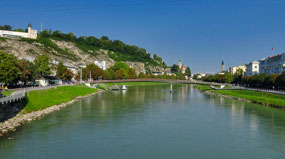
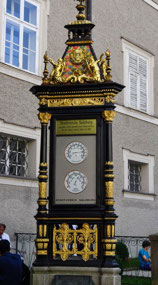
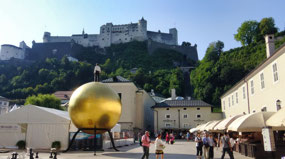
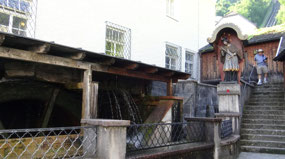
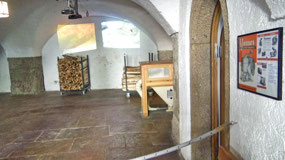
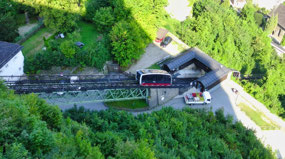
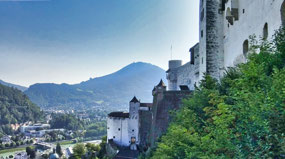
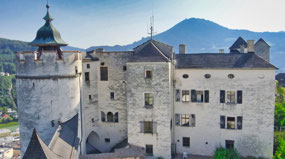
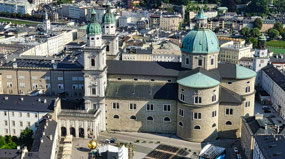
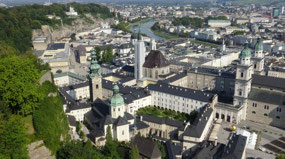
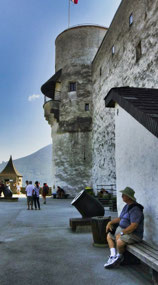
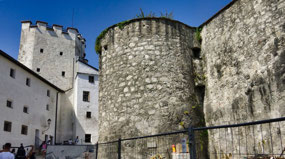
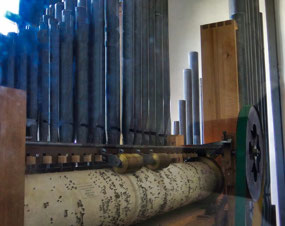
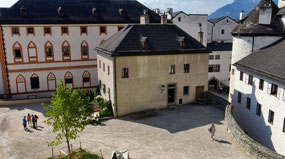
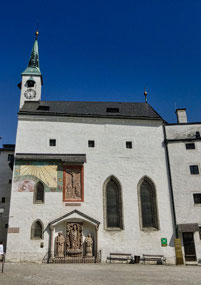
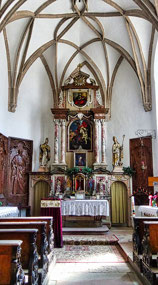
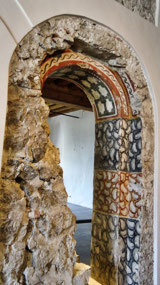
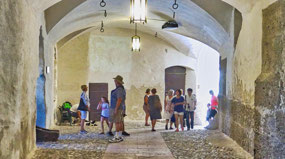
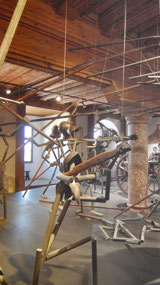
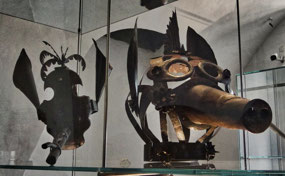
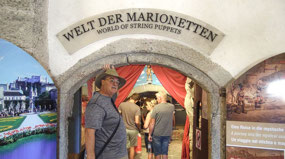
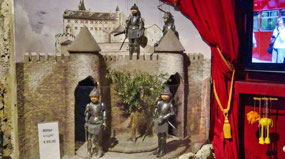
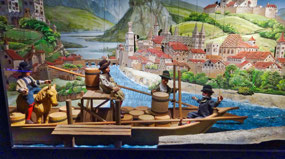

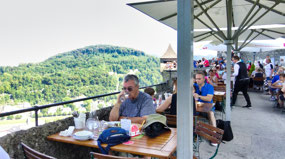
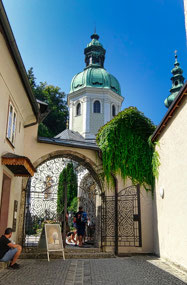
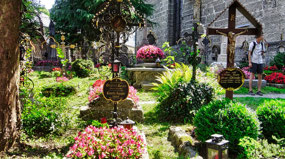
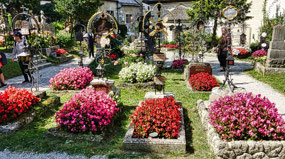

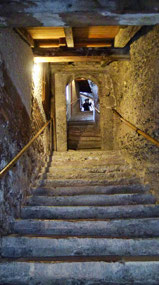
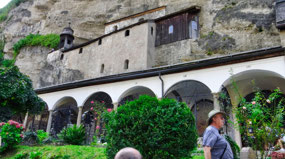

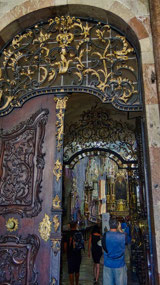
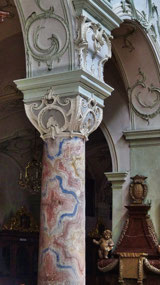

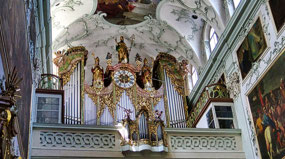
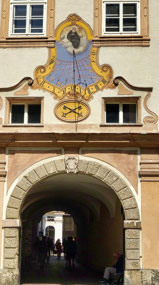
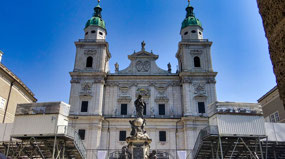
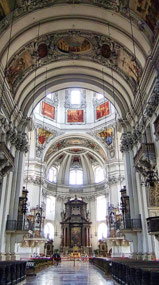
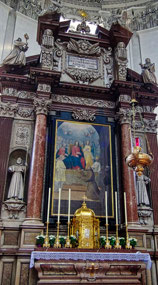
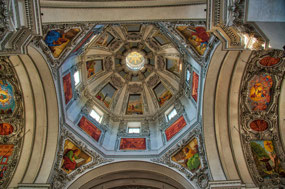
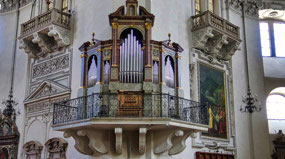
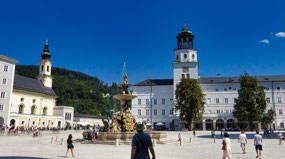
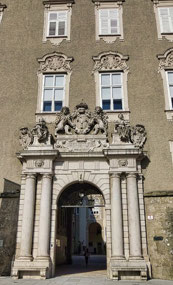
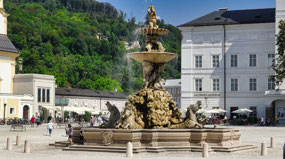
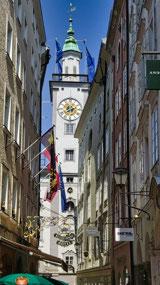
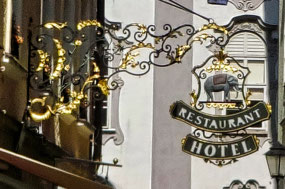
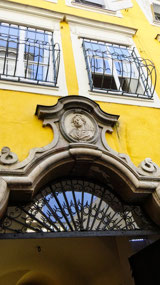
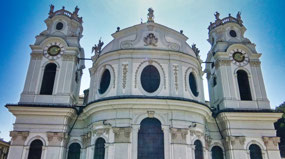
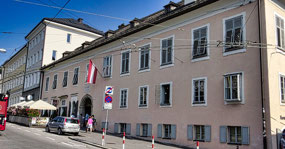
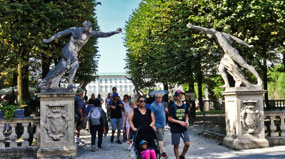
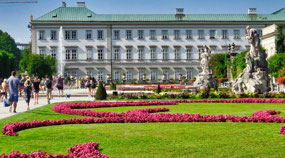
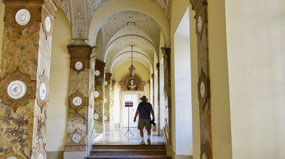
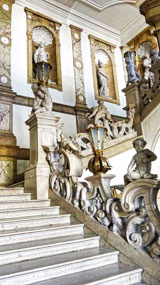
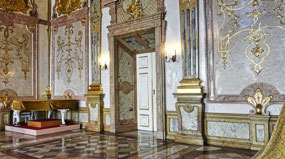
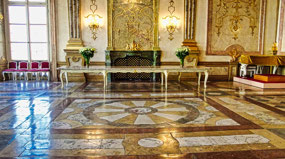
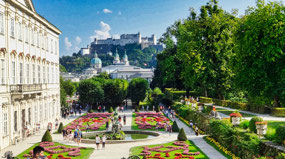


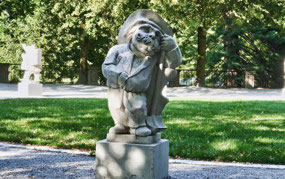
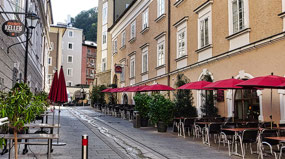
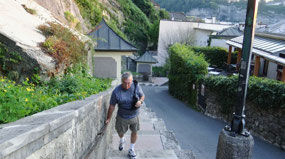
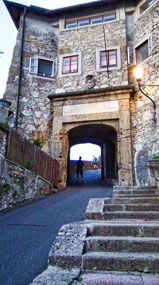
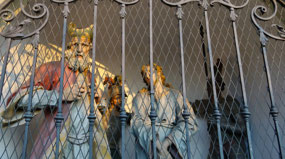
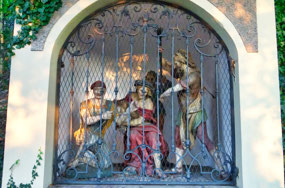
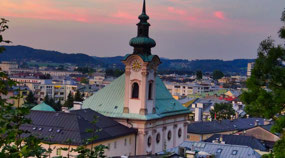
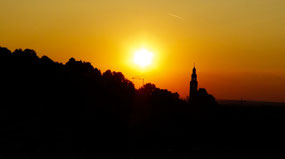
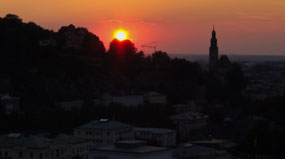









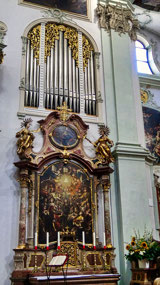
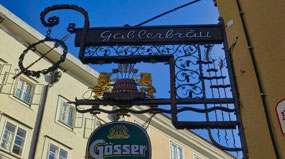

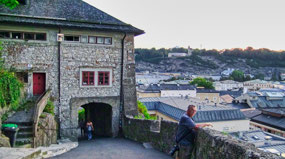
2025-05-22